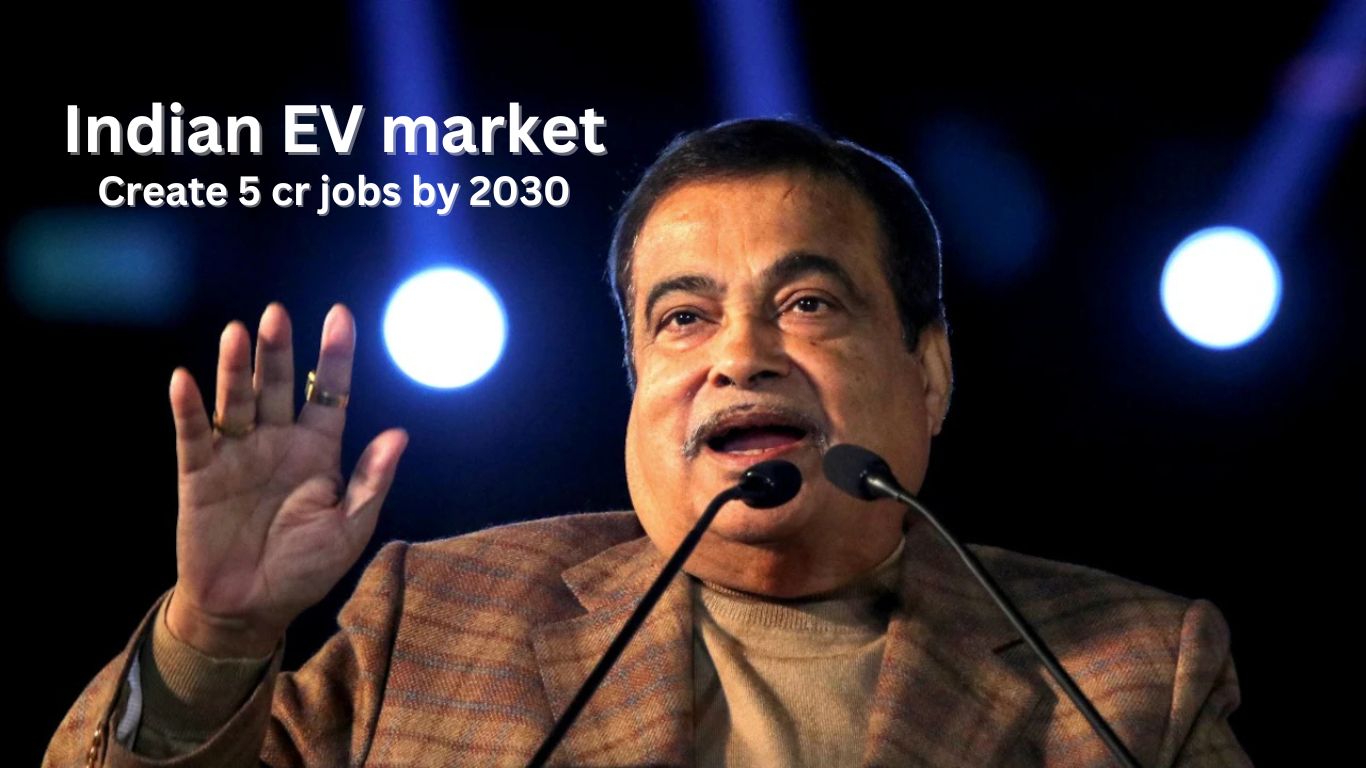Indian Auto Sector: India’s auto sector is undergoing a monumental transformation, combining rapid growth with a shift toward sustainability. With electric vehicles (EVs) at the forefront, the industry is poised for unprecedented expansion, economic impact, and global competitiveness. Let’s delve deeper into the vision, challenges, and opportunities shaping the future of India’s automobile industry.
Indian EV Market to Touch ₹20 Lakh Crore and Create 5 Crore Jobs by 2030
Union Minister Nitin Gadkari recently announced an ambitious vision for India’s EV market. By 2030, the sector is expected to grow to ₹20 lakh crore, creating five crore jobs across the entire ecosystem. This includes roles in vehicle manufacturing, battery production, infrastructure development, and financial services, showcasing the immense potential of the EV revolution.
The minister emphasized that Indian auto sector EV growth is critical for economic development and addressing pressing environmental challenges. With the transport sector contributing nearly half of India’s air pollution, transitioning to cleaner mobility solutions is a national imperative.
Fossil Fuel Imports Worth ₹22 Lakh Crore: An Economic and Environmental Challenge
India’s dependence on fossil fuel imports, valued at ₹22 lakh crore annually, poses significant economic and environmental challenges. Gadkari highlighted how this reliance burdens the economy and exacerbates pollution.
Transitioning to EVs and renewable energy sources is a key strategy to reduce this dependency. India can address these challenges by promoting sustainable alternatives such as electric mobility, solar energy, and biomass while fostering a self-reliant energy ecosystem.
From Solar Power to Biomass: India’s Push for Green Energy in Transportation
As part of its sustainable vision, India is prioritizing green energy. Currently, 44% of the nation’s power basket is derived from solar energy, and efforts are underway to further develop hydro and biomass power.
Gadkari emphasized the importance of integrating renewable energy with the indian auto sector to create a cleaner, more efficient ecosystem. This synergy is expected to reduce carbon emissions, lower energy costs, and promote long-term sustainability.
EV Charging Infrastructure: Expanding the Backbone of India’s Mobility Revolution
India’s electric vehicle ecosystem is supported by a rapidly growing charging infrastructure. The country currently has 16,000 EV charging stations, with an additional 2,800 in the pipeline.
A robust charging network is essential to address range anxiety and encourage EV adoption. Gadkari highlighted the government’s commitment to ensuring that charging facilities are accessible across urban centers, highways, and industrial hubs.
This strategic approach aims to make EVs a viable option for consumers while supporting India’s vision of achieving significant EV penetration by 2030.
Demand for Electric Buses: Addressing the Shortage and Scaling Production
India’s public transport sector is a critical component of its green mobility push. However, there is a significant shortage of electric buses. While the country needs 1 lakh electric buses, the current manufacturing capacity is just 50,000.
Gadkari urged automakers to expand their production capabilities without compromising on quality. He called this a golden opportunity for companies to contribute to the nation’s green goals while tapping into a growing market segment.
From ₹7 Lakh Crore to ₹22 Lakh Crore: Indian Auto Sector Soars Globally
When Nitin Gadkari assumed office in 2014, Indian auto sector was valued at ₹7 lakh crore. Today, it has tripled to ₹22 lakh crore, making India the third-largest automobile market in the world, surpassing Japan.
India now trails only the USA (₹78 lakh crore) and China (₹47 lakh crore). This growth reflects the resilience and innovation of the Indian auto industry, which is poised for even greater achievements.
Lithium-Ion Battery Manufacturing: Powering India’s EV Revolution
Lithium-ion batteries are at the heart of the EV ecosystem. Recognizing their importance, leading Indian companies such as Tata, Adani, and Maruti are setting up manufacturing facilities.
Local production of batteries is crucial for reducing costs, enhancing supply chain reliability, and boosting India’s competitiveness in the global EV market. This initiative also aligns with India’s goal of becoming a net exporter of EV components.
Competing with Global Giants: A Vision to Surpass the USA and China
India’s ambition to become the world’s largest automobile market requires strategic planning and innovation. Currently, the USA and China lead the global rankings, but Gadkari envisions India claiming the top spot within the next five years.
“To compete against China, Indian Auto Sector need good technology and quality,” he stated, emphasizing the need for cutting-edge innovation, robust manufacturing standards, and a commitment to sustainability.
The Future of Indian Auto Sector: Driving Toward Global Leadership
Indian auto sector is at a turning point. The rapid rise of electric mobility, combined with investments in green energy and infrastructure, positions the country as a global leader in sustainable transportation.
Achieving this vision will require the collective efforts of policymakers, industry leaders, and consumers. With its ambitious targets and proactive strategies, “The Rise of Indian Auto Sector” is not just a slogan—it’s a roadmap to a cleaner, more prosperous future.
By embracing innovation, fostering sustainability, and addressing challenges head-on, India is charting a path that could set a benchmark for the global automobile industry. The next decade promises to be a transformative era, with India firmly in the driver’s seat.










